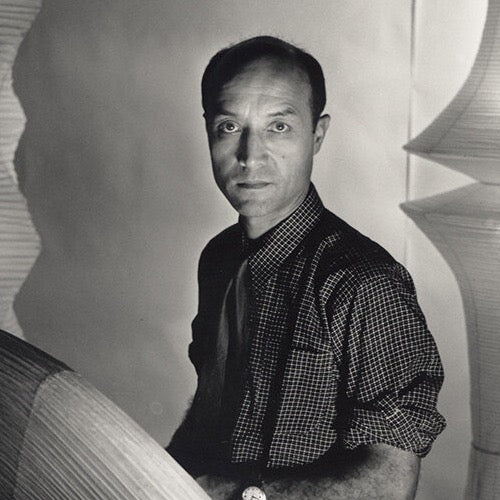Isamu Noguchi
1904 - 1988
イサム・ノグチは、20世紀における最も重要で批評家から高く評価されている彫刻家の一人です。
生涯にわたる芸術的な探求を通じて、彼は彫刻、庭園、家具や照明のデザイン、陶芸、建築、ランドスケープ、舞台美術など、多彩な作品を生み出しました。
ノグチはロサンゼルスで生まれましたが、2歳の時に母親と共に日本へ移り、13歳まで日本で暮らしました。1918年の夏に、ノグチは単独でアメリカへ戻りました。
デザインの量産に挑戦する機会があれば、ノグチはそれを積極的に活用しました。1937年にはゼニス・ラジオ社のためにベークライト製のインターホンをデザインし、1947年にはハーマンミラー社によって彼のガラストップのテーブルが製造されました。このデザインや、1951年に伝統的な日本の素材を用いて開発されたあかりのライトスカルプチャーなどは、今日でも製造が続けられています。
1985年、ニューヨークのロングアイランドシティにイサム・ノグチ庭園美術館(現在はノグチ美術館として知られる)を開設しました。この美術館は、アーティスト本人が設立および設計したもので、彼の公共空間への献身の集大成を示しています。美術館は1920年代の工業用建物を利用しており、1960年に彼がスタジオを構えた場所の通り向かいに位置しています。静かな屋外彫刻庭園と多くのギャラリーがあり、ノグチの作品や彼のキャリアを物語る写真、図面、模型が展示されています。また、彼は日本の室にあるスタジオを保存して芸術家や学者たちのインスピレーションの場とすることを望んでおり、1999年にイサム・ノグチ庭園美術館ジャパンの開館によってその願いは実現されました。
Isamu Noguchi is one of the twentieth century’s most important and critically acclaimed sculptors.
Throughout a lifetime of artistic experimentation, he created sculptures, gardens, furniture and lighting designs, ceramics, architecture, landscapes, and set designs.
Noguchi was born in Los Angeles but moved to Japan with his mother at the age of two, where he lived until he was thirteen. In the summer of 1918, Noguchi returned alone to the United States.
Whenever given the opportunity to venture into the mass production of his designs, Noguchi seized it. In 1937, he designed a Bakelite intercom for the Zenith Radio Corporation, and in 1947, his glass-topped table was produced by Herman Miller. This design and others—such as his designs for Akari light sculptures, initially developed in 1951 using traditional Japanese materials—are still being produced today.
In 1985, Noguchi opened the Isamu Noguchi Garden Museum (now known as the Noguchi Museum) in Long Island City, New York. The museum, established and designed by the artist, marked the culmination of his commitment to public spaces. Located in a 1920s industrial building across the street from where the artist had established a studio in 1960, it features a serene outdoor sculpture garden and many galleries displaying Noguchi’s work, along with photographs, drawings, and models from his career. He also expressed the wish that his studio in Mure, Japan, be preserved to inspire artists and scholars; this was fulfilled with the opening of the Isamu Noguchi Garden Museum Japan in 1999.
